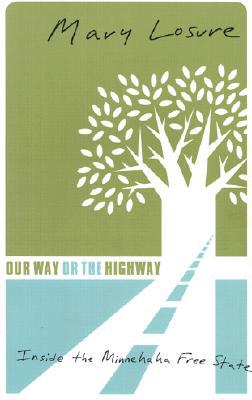

 |

|

The average rating for Our way or the highway based on 2 reviews is 4 stars.
Review # 1 was written on 2017-01-29 00:00:00 Tracy McWilliams Tracy McWilliamsI picked up this book when after doing a search for water related conservation books that were local to Minnesota. As part of my work at the library I'm helping to create a discussion group where each person reads an article, watches a movie, listens to a podcast or does something else to prepare to discuss a particular topic. In April we'll be having a discussion about the environment in honor of Earth Day. This book would be interesting to bring forward in that discussion in that it doesn't have solely to do with protecting the environment or the destructive activities humankind engages in that threaten the stability of the Earth and everything that lives upon it. The book takes a close look at a large-scale protest that took place in South Minneapolis during the late 90's, but is very relevant to movements going on today, such as the Standing Rock camp and activism. It started with one woman who didn't want to abandon her home of a lifetime, especially with her husband suffering from alzheimer's, she wanted them to continue in the place that they were both familiar with, having lived there forty-three years. In a desperate attempt to stop the highway 55 reroute that would obliterate her home, along with miles of parkland and many old gnarly oaks, she invited a group of protesters to camp on her property, calling it "Camp Two Pines." The movement grew when four especially old oak trees became the focus for the Mendota Mdewakanton Dakota who felt the trees could have been grave markers and marked a sacred place for them. These groups came together, not without their differences, but united in the attempt to save this area. Although they were unsuccessful in re-routing the reroute or saving the trees, they did a lot for the nearby Coldwater spring and part of that was the recognition of the springwaters as a sacred site. Not to mention the water pollution that would have resulted otherwise. Therefore, even though the group wasn't able to accomplish the goal it set out to, to save Carol Kratz' home, the Four Oaks and the strip of parkland that many people in the neighborhood enjoyed looking out on, it was still successful in starting a movement, in establishing some methods and protecting water, which I think can still be felt in protests going on today. I felt Mary Losure did a good job of writing a fair, respectful and wide view of the issues, the camp, the various people involved and presenting the whole story of the Minnehaha Free State, highway reroute, and the history of the Earth First! Movement as well that of the Mendota Mdewakanton Dakota who were all a part of the attempt to protect an area from development. That said, there were many points where I wondered if we really had learned anything from this event. People are still tearing down old growth trees with little thought, cities are more interested in the thought of greater tax returns on property than protecting the environment, or even in some cases, following their own restrictions. Even though there is some movement from a very small population of people to move towards smaller, less impact, housing, most people still want as much house as they can afford and as much consumables as they can afford to fit into them. |
Review # 2 was written on 2019-11-30 00:00:00 John Harry John HarryA great piece of journalism. Mary Losure of MPR tells the story of the Earth First activists and Native Americans who formed a coalition to try to stop the rerouting of Highway 55 in South Minneapolis from destroying a residential area, a stand of old oak trees, and a spring that the Mendota Dakota believed to be sacred. In the course of the story, she gives the background and perspectives of officials from the MN Dept of Transportation, the Earth Firsters, and the members of the Mendota Dakota community as she documents each phase of the protest. The style is very close to radio journalism, and the book includes black and white photos from the Minneapolis Star Tribune, so you can picture it all as it happens. I had just moved to the Twin Cities when this protest was happening, and I remember hearing about it on the radio, but not knowing what it was all about. I read this book a couple of years later, and it helped me to get to know my new city a bit better. Reading this book a second time, almost exactly 20 years after the events it depicts, I'm struck by how much has remained the same here. Adversarial relationships between police and activists, "regular folk" who may not like what the state or industry is doing but think resistance is futile, a small group of dedicated and resourceful activists (who may be scruffy and drive elaborately painted buses) holding out as long as possible until they are removed by force. |
CAN'T FIND WHAT YOU'RE LOOKING FOR? CLICK HERE!!!